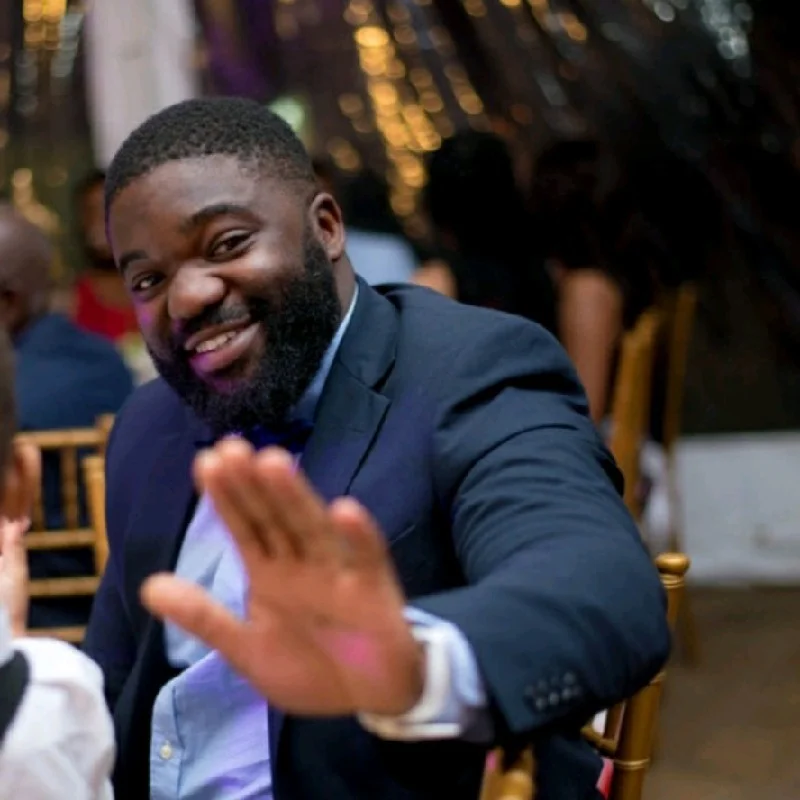
Danny Munetsi at Virtua - Episode 4 - Military Leavers
17 September, 2025From Royal Signals to RF & DAS Leadership.
In this Military Leavers Spin-Off Edition of The Route to Networking Podcast, host Louis Parratt speaks with Danny Munetsi, whose journey took him from the Royal Signals to leading RF and DAS projects at Virtua. Danny’s story is one of resilience, adaptability, and lifelong learning — with lessons that any military leaver, or aspiring engineer, can take to heart.
Finding His Path: From Football Dreams to the Army
Danny’s early ambition was football. After playing at a good level but not securing a professional contract, he began to look for a new path. A close friend, already in the military, spoke enthusiastically about life in the Army, particularly the camaraderie and sport.
“He was just singing its praises — the travel, the opportunities, the sport. I didn’t want to be left behind, so I joined too.”
Danny originally considered avionics with the Royal Electrical and Mechanical Engineers, but with long waiting times to join, he opted for the Royal Signals instead. This decision set him on a path into systems engineering, where he began training at Blandford Camp.
Training That Tests You — and Transforms You
Military training was both rigorous and fast-paced. After 14 weeks of basic training, Danny moved on to technical training at Blandford, which he describes as almost a year of full-time study across multiple systems.
“You’re learning everything — radios, IT systems, satellite kit. It’s eight-week blocks of intense training. It’s physically and mentally demanding, but it gives you skills that are directly transferable.”
What stood out was that much of the instruction came from civilian subject matter experts and even university lecturers, making the knowledge relevant outside of the Army.
“Most of the kit is commercially available — just packaged in green. The training was very close to HND level, and actually backed by Bournemouth University.”
The skills weren’t just technical. Soldiers had to train others, troubleshoot in the field, and adapt to new technologies quickly. Danny recalls that whenever units prepared for deployment, they’d often receive additional vendor-specific training, sometimes even overseas with allied forces.
Lessons in Transferability
At the time, Danny didn’t fully appreciate how useful his training would be after the military. That perspective only came when he began preparing to leave.
“It’s only when you’re leaving that you realise — all this stuff is civilian technology. Laptops are laptops, servers are servers, radios are radios. It’s all transferable.”
His time in the Royal Signals gave him deep experience in RF engineering (VHF, UHF, satellite comms) and later in IT systems when the trades merged. These technical skills, combined with the problem-solving mindset drilled into soldiers, became the foundation for his career in commercial telecoms.
From Military Networks to DAS and RF in Civilian Life
Today, Danny oversees RF and DAS network projects for Virtua, ensuring that buildings and infrastructure provide seamless mobile coverage. The stakes are high — connectivity is now seen as a core utility, as essential as water or electricity.
“When people move into a building, they’ll ask: do you have internet? Do you have mobile signal? If you don’t, it’s a problem.”
Projects are never straightforward. Every building brings unique challenges:
- Skyscrapers with different layouts and riser restrictions.
- Landlords refusing use of lift shafts for cabling.
- Historic or repurposed buildings with walls reinforced in ways you can’t see until signal testing exposes them.
“We once installed a system in a building that looked normal, but the signal wasn’t penetrating. Later we found it had been a police building in the war, with double-thick walls and metal filings inside.”
Danny emphasises the importance of resilience and futureproofing, drawing directly on his military mindset:
“You always look at the worst-case scenario. You think: what happens if this fails? How do we design so it lasts beyond 10 years, or adapts when 6G or 7G arrives?”
Commitment to Continuous Learning
Even after leaving the Army, Danny’s learning didn’t stop. He completed a BSc degree through distance learning alongside full-time work. He credits his military-instilled discipline and time management for helping him succeed.
“They tell you 19 hours a week. That sounds fine until you realise you’ve got kids, commitments, and work. You have to be disciplined, plan your time, and sometimes swap Netflix for study.”
For service leavers, he advises making the most of training allowances but warns against wasting them on flashy, generic courses.
“Don’t just spend your credits on something that looks fun for two weeks. Speak to recruiters, check what’s in demand, and think long-term.”
Certifications like CSCS, ECS, health & safety, and first aid can make a real difference, often enabling service leavers to get on-site immediately.
Leadership and Adaptability
Danny highlights how military leadership training prepared him to manage highly skilled civilian engineers.
“In the Army you learn to lead in every environment — deployments, training exercises, even adventure sports. You learn when to micromanage and when to step back. That adaptability transfers directly to the workplace.”
He also stresses the value of staying calm under pressure:
“Colleagues sometimes ask why I’m so relaxed when things go wrong. But when you’ve been through tougher situations in the military, you don’t panic. You focus on fixing the problem.”
Advice for Service Leavers
Danny encourages anyone considering the move to civilian life to be confident in their skills and plan ahead:
“Don’t be afraid. You’ve got plenty of skills to offer. Plan your move, speak to people who’ve already left, and use your network. And be proud of your military background — it’s an asset.”
He also warns against rushing:
“Make sure you’re ready. I once turned down redundancy, then six months later left without the package. Learn from that — time your exit well.”
Looking Ahead: AI and the Future of RF
Danny is particularly excited about the potential for AI in RF and networking design. He imagines a future where surveys and coverage predictions are automated, speeding up deployment and improving accuracy.
“If carpet fitters can scan a room and know what’s needed, why can’t we do that for RF? AI could tell us how many access points a building needs before we even step inside.”
For him, AI isn’t about replacing engineers, it’s about empowering them to deliver faster, smarter solutions.
🎧 Listen to the full episode to hear Danny’s story in his own words — from football dreams to the Royal Signals, to shaping the future of RF and DAS design.
🔗 Connect with Danny here: Danny Munetsi LinkedIn



